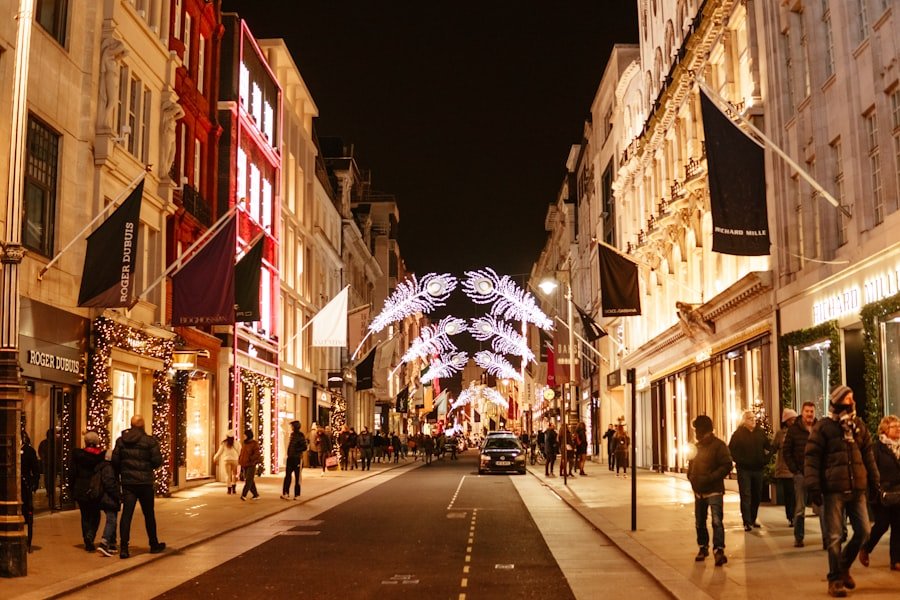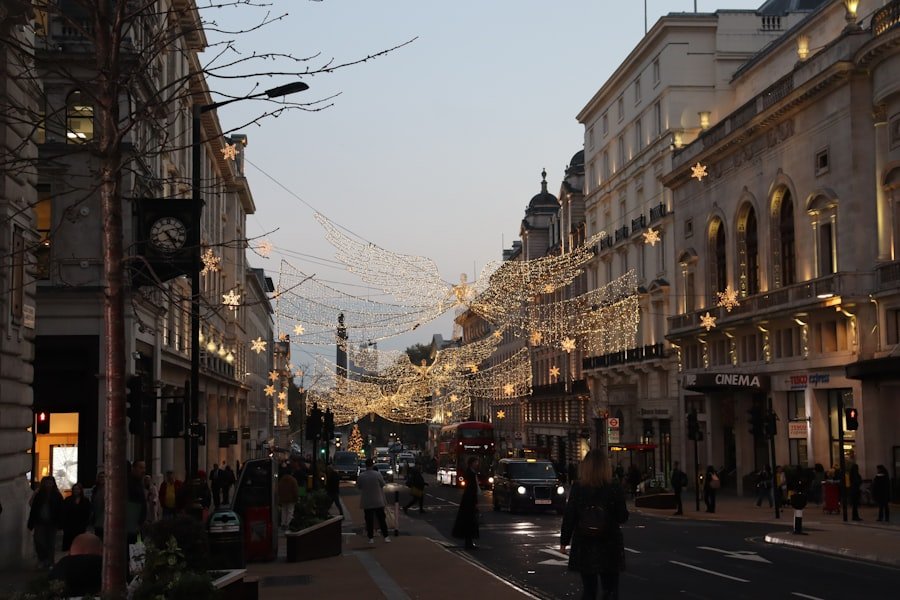Layering is an essential technique for mastering winter fashion, allowing individuals to adapt to fluctuating temperatures while maintaining a stylish appearance. The concept of layering involves wearing multiple garments on top of one another, creating a cohesive look that not only provides warmth but also adds depth and texture to an outfit. The beauty of layering lies in its versatility; it enables one to mix and match various fabrics, colors, and styles, resulting in a unique ensemble that reflects personal taste.
For instance, starting with a lightweight base layer made from moisture-wicking materials can help regulate body temperature, while a mid-layer, such as a fleece or a thin sweater, offers additional insulation. When layering, it’s crucial to consider the fit and fabric of each piece. Opting for fitted base layers can prevent bulkiness, allowing for easier movement and a more polished silhouette.
A well-fitted turtleneck can serve as an excellent base layer, providing warmth without adding unnecessary volume. Over this, a slightly looser sweater or cardigan can be added for comfort and style. Finally, a tailored coat or jacket can complete the look, ensuring that the outer layer is both functional and fashionable.
By carefully selecting each layer, one can create an outfit that is not only warm but also visually appealing, showcasing a thoughtful approach to winter dressing.
Key Takeaways
- Layering is essential for staying warm and stylish in the winter
- A good winter coat is a must-have for braving the cold weather
- Don’t forget to accessorize with a scarf and gloves for added warmth
- Stylish footwear is important for both fashion and functionality in the winter
- Incorporate sweaters and knits into your winter wardrobe for added warmth and style
Embrace the Winter Coat
The winter coat is arguably the most significant investment in any cold-weather wardrobe. It serves as the outermost layer, providing protection against the elements while also making a bold fashion statement. When choosing a winter coat, it’s essential to consider both functionality and style.
A well-constructed coat should be insulated enough to keep you warm during frigid temperatures while also being stylish enough to complement your overall look. Popular options include classic wool overcoats, trendy puffer jackets, and chic trench coats, each offering unique benefits depending on the occasion and personal style. For instance, a long wool coat can elevate a casual outfit, making it suitable for both work and social gatherings.
Its structured silhouette adds sophistication, while the fabric provides warmth without sacrificing style. On the other hand, puffer jackets have gained popularity for their practicality and comfort. They are often lightweight yet incredibly warm, making them ideal for outdoor activities or casual outings.
When selecting a winter coat, consider the color and pattern as well; neutral tones like black, gray, or camel are timeless choices that can easily be paired with various outfits, while bold colors or patterns can serve as statement pieces that add flair to dreary winter days.
Don’t Forget the Scarf and Gloves

Accessories play a pivotal role in winter fashion, with scarves and gloves being essential components that enhance both warmth and style. A scarf not only serves as a protective layer against cold winds but also acts as a versatile accessory that can transform an outfit. From chunky knit scarves to lightweight silk options, the variety available allows for personal expression.
A vibrant scarf can inject color into an otherwise muted winter ensemble, while a classic plaid pattern can add a touch of timeless elegance. Gloves are equally important in maintaining warmth during the colder months. They come in various materials, from leather to knit, each offering different levels of insulation and style.
Leather gloves provide a sleek look suitable for formal occasions, while knitted gloves offer a more casual vibe perfect for everyday wear. Additionally, touchscreen-compatible gloves have become increasingly popular, allowing individuals to use their smartphones without exposing their hands to the cold. When selecting scarves and gloves, consider coordinating colors and patterns with your winter coat to create a cohesive look that showcases your attention to detail.
Stylish Footwear is a Must
Footwear is another critical element of winter fashion that should not be overlooked. The right pair of shoes can make or break an outfit while also providing necessary protection against icy conditions. When choosing winter footwear, it’s essential to prioritize both style and functionality.
Ankle boots with sturdy soles are an excellent choice for navigating slippery sidewalks while still looking chic. Opting for styles with waterproof materials can further enhance their practicality during wet or snowy weather. For those who prefer a more casual look, stylish sneakers designed for winter wear are becoming increasingly popular.
These shoes often feature insulated linings and water-resistant exteriors while maintaining a trendy aesthetic. Additionally, knee-high boots can add an element of sophistication to any outfit; they pair beautifully with skirts or dresses while providing ample coverage against the cold. When selecting footwear for winter, consider not only the aesthetic appeal but also the comfort level—ensuring that you can walk confidently through any winter landscape without sacrificing style.
Incorporate Sweaters and Knits
Sweaters and knits are staples in any winter wardrobe, offering warmth and comfort while allowing for creative expression through various styles and textures. The range of options available is vast; from chunky cable-knit sweaters to sleek turtlenecks, there’s something for everyone. A well-chosen sweater can serve as the focal point of an outfit or act as a complementary layer beneath a coat or jacket.
For example, pairing a vibrant oversized knit with tailored trousers creates an effortlessly chic look that balances comfort with sophistication. Incorporating different textures into your knitwear can also elevate your winter outfits significantly. Mixing materials such as cashmere with wool or cotton can create visual interest while ensuring warmth.
Additionally, experimenting with patterns—such as stripes or fair isle designs—can add personality to your ensemble. Layering sweaters over collared shirts or under blazers can create depth in your outfit while providing versatility for various occasions. Ultimately, sweaters and knits are not just functional pieces; they are opportunities to showcase individual style during the colder months.
Consider Waterproof Outerwear

As winter weather can often be unpredictable, investing in waterproof outerwear is crucial for staying dry and comfortable throughout the season. Traditional coats may not always provide adequate protection against rain or snow; therefore, selecting outerwear specifically designed to repel water is essential for maintaining both style and functionality. Many brands now offer fashionable options that incorporate waterproof technology without compromising on aesthetics.
For instance, modern trench coats made from water-resistant materials combine classic design with practical features such as adjustable hoods and sealed seams. These coats can easily transition from day to night while keeping you dry during unexpected downpours. Additionally, rain jackets with stylish cuts and colors have become increasingly popular; they offer lightweight protection without bulkiness and can be layered over sweaters or long-sleeve tops for added warmth.
By prioritizing waterproof outerwear in your winter wardrobe, you ensure that you remain stylishly prepared for whatever weather may come your way.
Dress for Indoor and Outdoor Activities
Winter often brings about a variety of activities that require different approaches to dressing appropriately. Whether attending holiday parties indoors or engaging in outdoor sports like skiing or ice skating, it’s essential to consider both comfort and style when selecting outfits for these occasions. For indoor events, layering becomes particularly important; transitioning from the cold outdoors to warm indoor environments requires clothing that can be easily adjusted.
For example, wearing a stylish dress paired with tights allows for warmth while still looking elegant at holiday gatherings. Adding a tailored blazer or cardigan provides an extra layer that can be removed once indoors. Conversely, when preparing for outdoor activities, it’s vital to focus on functional clothing that allows for movement while keeping you warm.
Thermal leggings under ski pants or insulated jackets designed for active wear ensure comfort during physical activities without sacrificing style.
Accessorize with a Hat or Beanie
Hats are not only practical in winter but also serve as fashionable accessories that can enhance any outfit significantly. A well-chosen hat can add personality and flair while providing warmth to your head and ears during chilly weather. Beanies have become particularly popular due to their versatility; they come in various styles—from slouchy fits to fitted designs—and can be paired with almost any winter ensemble.
For those looking for something more sophisticated, wide-brimmed hats or fedoras can elevate casual outfits into chic statements suitable for outings or gatherings. Additionally, earmuffs are an excellent alternative for those who prefer not to wear hats but still want to keep their ears warm. When accessorizing with hats or beanies, consider coordinating colors with your outerwear or other accessories like scarves and gloves to create a cohesive look that showcases your personal style while keeping you warm throughout the winter months.
If you’re planning a trip to London in December, you may want to check out this article on Exploring the Delightful World of Asian Melon. It’s always good to know about different types of fruits and vegetables that you may encounter while traveling. Plus, trying new foods is always a fun adventure!
FAQs
What is the weather like in London in December?
In December, London experiences cold and damp weather with average temperatures ranging from 2°C to 8°C (36°F to 46°F). It is also common to experience rain and occasional snowfall.
What should I wear to stay warm in London in December?
To stay warm in London in December, it is recommended to wear layers, including a warm coat, scarf, gloves, and a hat. Additionally, waterproof footwear is essential to keep your feet dry in the rainy and snowy conditions.
Can I wear casual clothing in London in December?
Casual clothing is suitable for most activities in London in December, but it is important to ensure that your clothing is warm and weather-appropriate. Opt for comfortable and practical attire, such as jeans, sweaters, and waterproof outerwear.
Are there any specific clothing items I should avoid wearing in London in December?
It is advisable to avoid wearing clothing made of light fabrics or materials that do not provide adequate warmth. Additionally, open-toed shoes and sandals are not suitable for the cold and wet conditions in London during December.
What are some essential items to pack for a trip to London in December?
Essential items to pack for a trip to London in December include a warm coat, waterproof footwear, scarves, gloves, hats, and an umbrella. It is also advisable to pack clothing that can be layered for added warmth.

